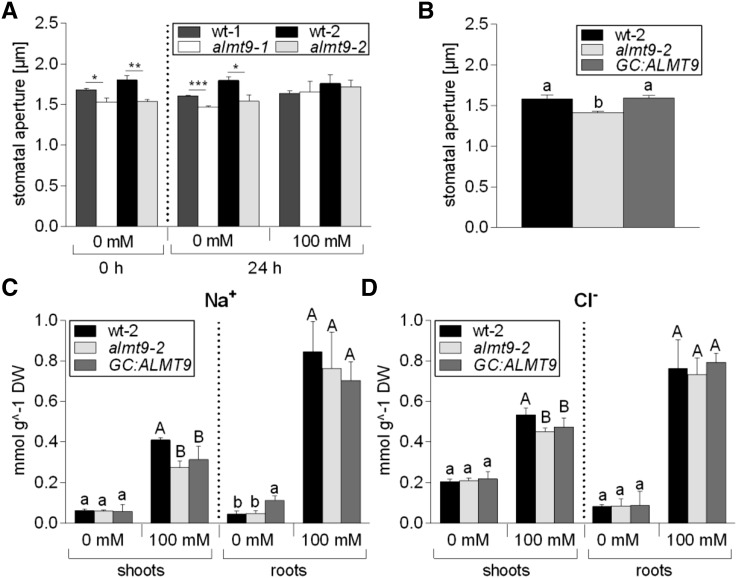Figure 5.
Investigation of stomatal movement and ion content in a guard cell-specific complementation line of almt9-2. A, In situ assay of native stomatal apertures (see “Materials and Methods”) using hydroponically grown plants of the almt9-1 and almt9-2 mutant alleles and the corresponding wild types (wt-1 and wt-2). Roots were exposed to control (0 mM) or NaCl (100 mM) solutions, and the stomatal aperture was measured before (0 h) and after (24 h) treatment. Error bars correspond to SEM, which was calculated from averages of at least four biological replicates. Asterisks indicate statistically significant differences in stomatal aperture from the corresponding wt (*P < 0.05, **P < 0.01, ***P < 0.01; two-tailed Student’s t test). B, In situ assay of native stomatal apertures of wt-2, almt9-2, and the complemented line GC:ALMT9 that guard cell-specifically expresses ALMT9 in control conditions. Error bars correspond to SEM, which was calculated from n ≥ 4 biological replicates. C and D, Contents of Na+ (C) and Cl− (D) were measured in shoots and roots of hydroponically grown wt-2, almt9-2, and GC:ALMT9 plants after 24-h treatment with control (0 mM) or NaCl (100 mM) solutions. The combined results from two independent experiments are shown as mean ± sd (n ≥ 5). For statistical analysis in B to D, one-way ANOVA and a Tukey-Kramer multiple comparison were used. Different letters indicate significant differences in ion content (P < 0.05) within each tissue (lowercase in control conditions, capital letters under NaCl stress). DW, Dry weight.

